Wildlife Research Project
Passage and Presence: Wolves & Coyotes
Nature has a way of stirring excitement within us, beckoning us to investigate clues of passage and presence. Yet, amidst the enchantment of the natural world, there are challenges in distinguishing the signs left behind by its inhabitants, particularly when it comes to species who reside in the same family. One such case is that of grey wolves and eastern coyotes; with both members of the canid family possessing remarkable similarities that can often lead to misidentification. Though they may appear the same, physical characteristics, tracks, signs and behaviours are all clues that can be used to differentiate the species.
Appearance
While it can be hard to tell from afar, one of the key differences between grey wolves and eastern coyotes lies in their physical characteristics. On average grey wolves are larger than their coyote counterparts, weighing between 50 to 100 pounds. With their muscular and robust build, wolves can measure up to 6 feet in length including their tail, and stand up to 30 inches high at the shoulder. Wolves’ strong jaws manifest as shorter, blockier snouts; their ears are shorter and rounder and their eyes are wide-set.
In contrast, eastern coyotes are smaller and sleeker, weighing anywhere from 15 to 45 pounds. They may be 4 feet long from snout to tail and stand around 19 inches tall at the shoulder. Compared to wolves, coyotes have pinched, angular features, with narrow pointed snouts, large pointed ears and eyes appearing closer together. Coyotes’ coats may appear tan, brown, and grey, whereas wolves have the most deviation from this range, also appearing in black and even mottled white, sporting shorter, bushier tails.
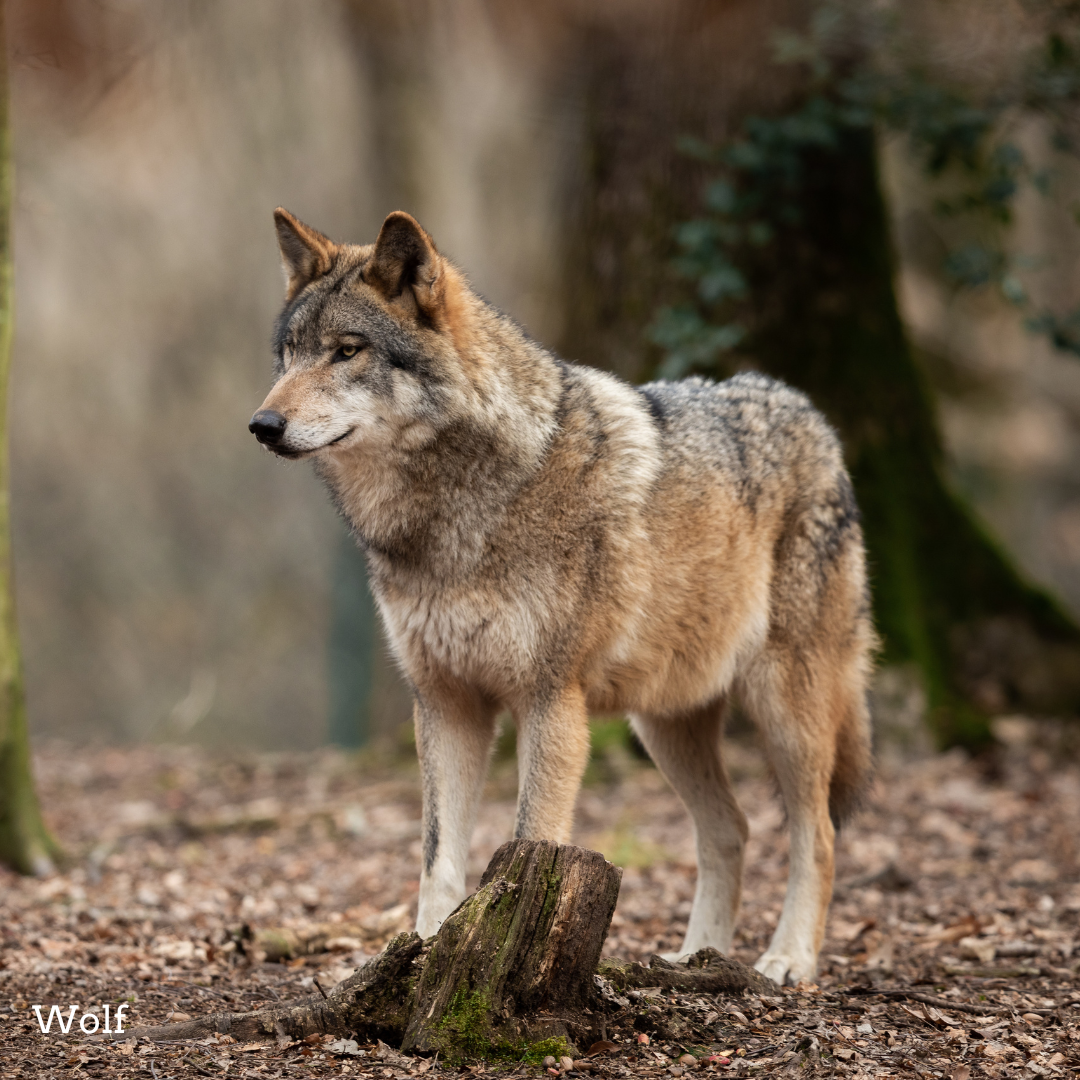
Slide title
Write your caption hereButton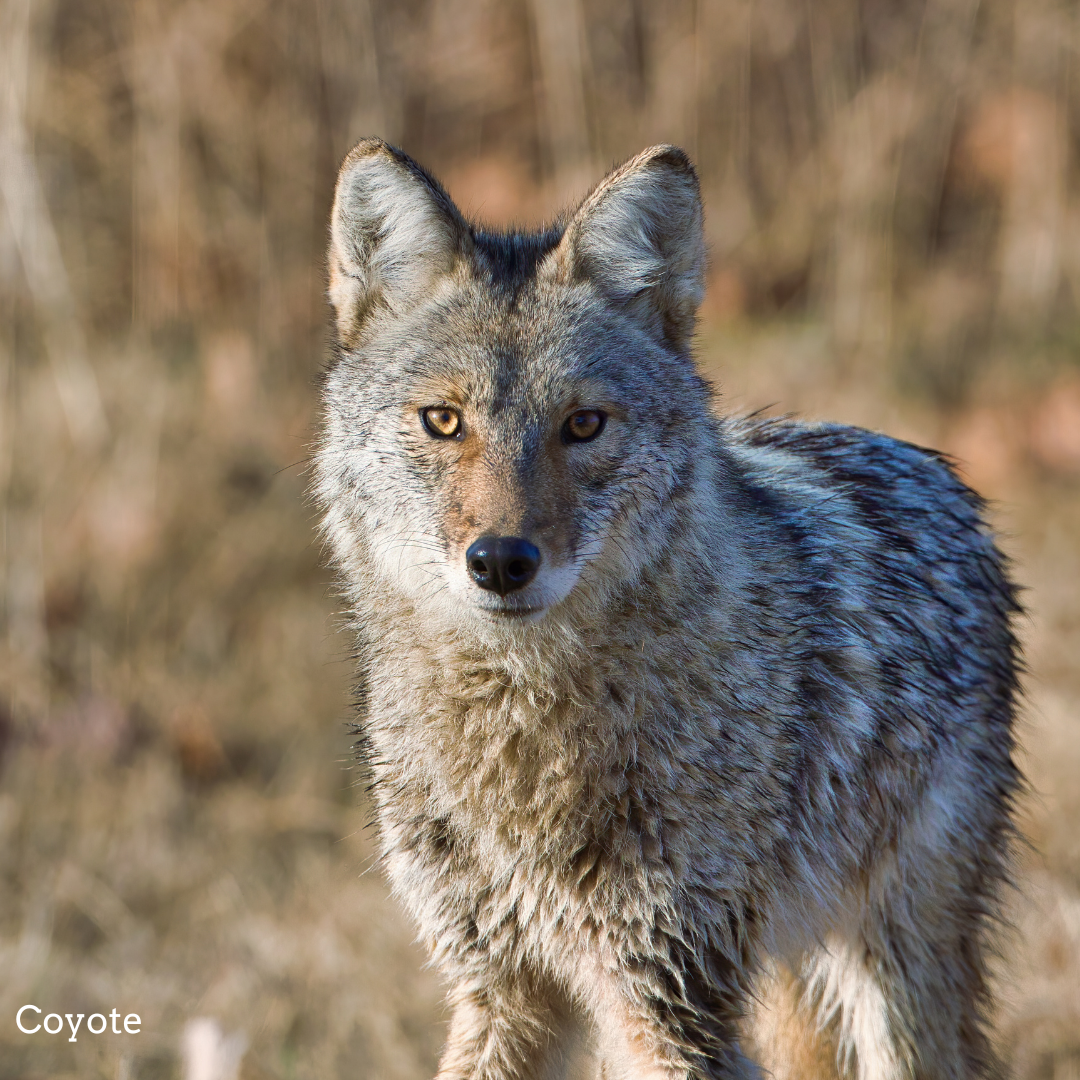
Slide title
Write your caption hereButton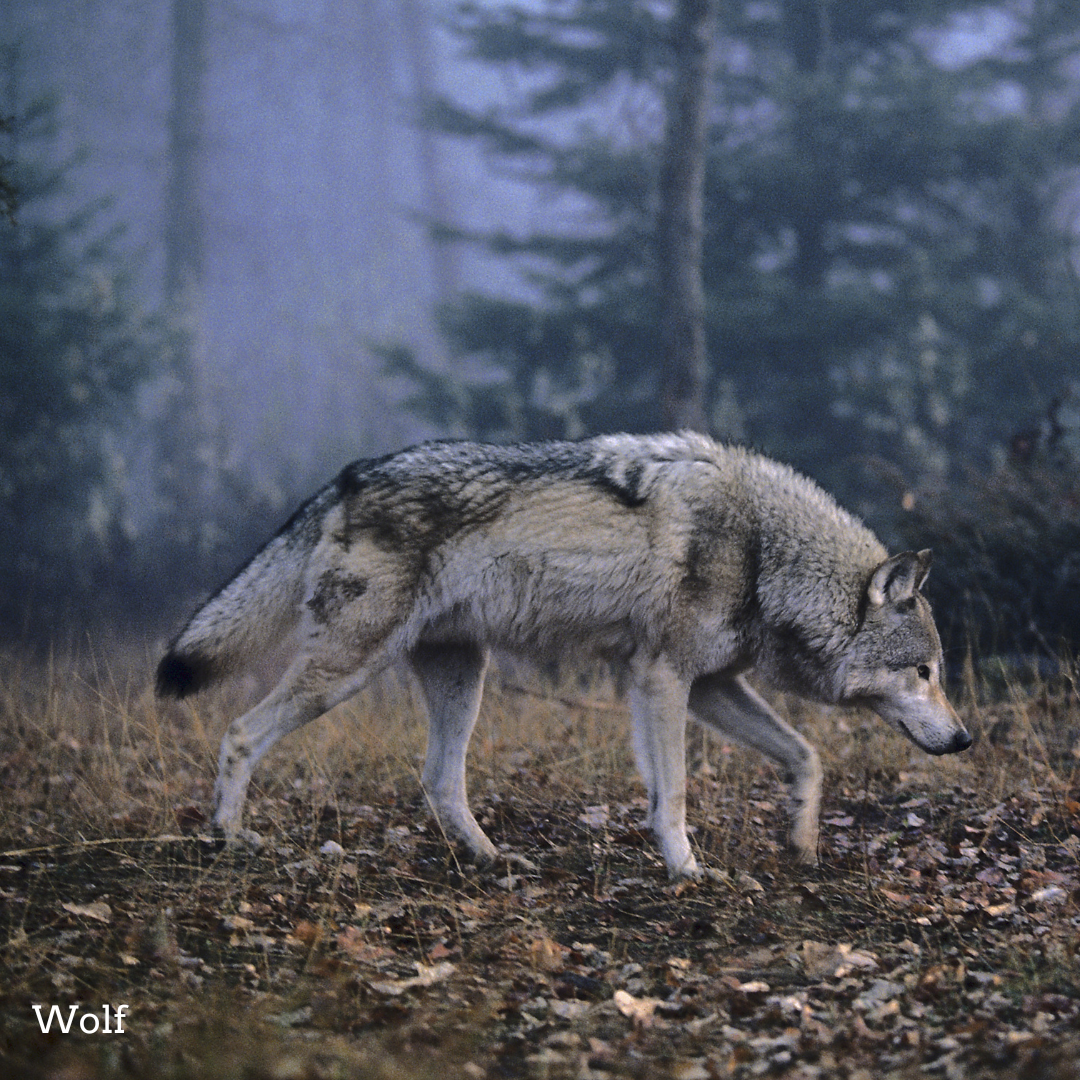
Slide title
Write your caption hereButton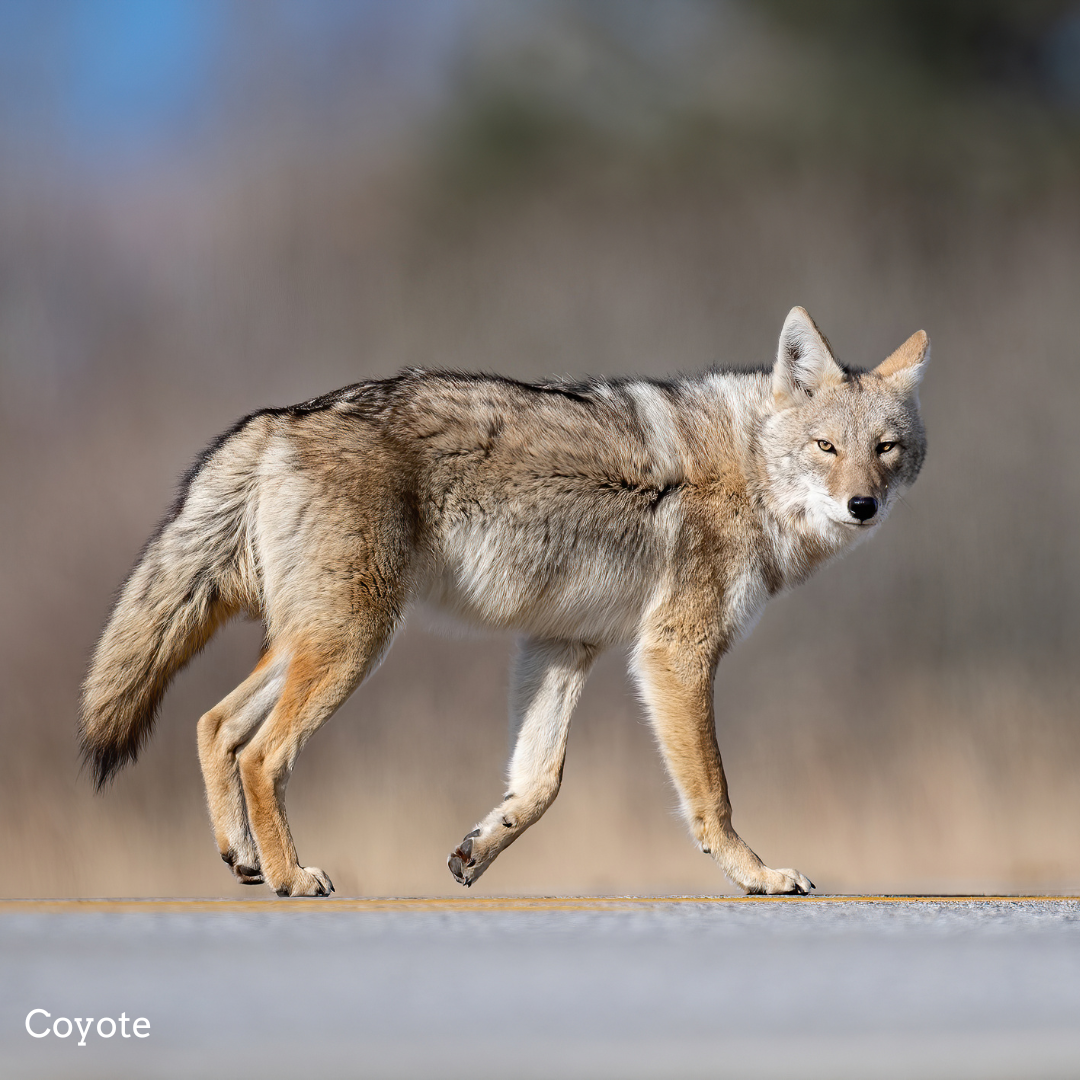
Slide title
Write your caption hereButton
Wolves are larger than coyotes, with the males of both species larger than females.
Tracks
Like all canines, wolves and coyotes have four toes on their hind feet. On their front feet, they have four toes and a dewclaw (or vestigial first toe) situated higher on the leg that does not register in tracks. On average, wolves have a longer stride and larger tracks than coyotes. Their sheer weight may cause their toes to appear spread apart with all four nails visible.
| Front Foot (Inches) | Hind Foot (Inches) | |
|---|---|---|
| Grey Wolf | 3 ⅞ to 5 ½ long by 2 ⅜ to 5 wide | 3 ⅛ to 4 ¾ long by 2 ¼ to 4 ¼ wide |
| Eastern Coyote | 2 ⅞ to 3 ½ long by 1 ⅞ to 2 ½ wide | 2 ½ to 3 long by 1 ⅝ to 2 ⅛ wide |
The tracks of the eastern coyote are more delicate in nature, often resembling a relatively tight oval imprint with two middle nails registering in the substrate. Both species trotting gait appears as a direct register, where front and hind tracks are layered on top of each other, creating a straight path.
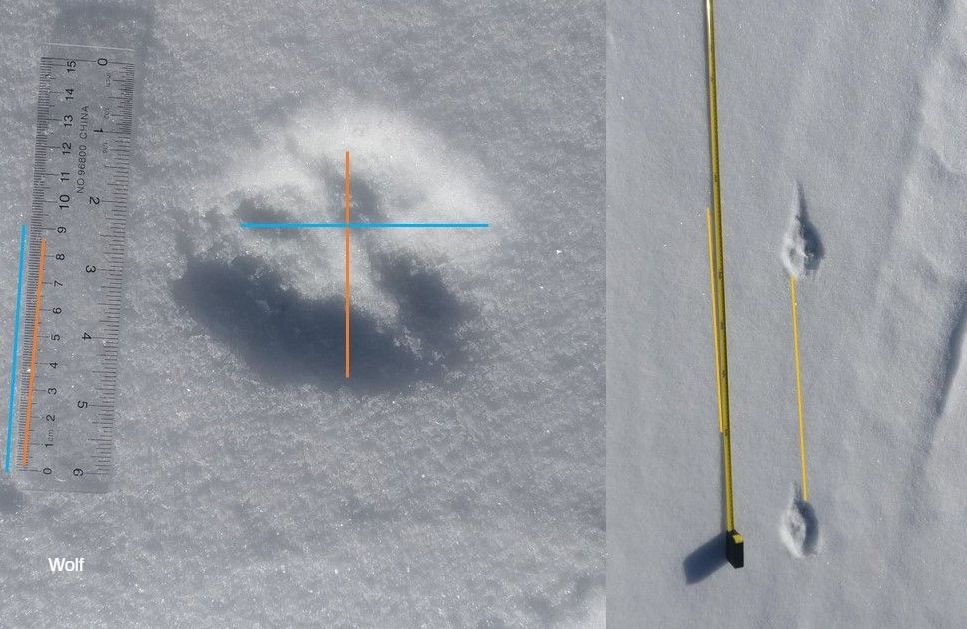
Wolf
Button Write your caption hereButton
Write your caption hereButton
Image one shows the track of a wolf, with a stride of ~60cm. Image two shows what is believed to be a coyote track, with a stride of ~33cm.
Scat
The scat of wolves and coyotes is especially similar. Both species have a natural affinity for depositing scat in the middle of trails or path junctions, and in the case of coyotes, the occasional elevated surface. Wolf and coyote scat has tapered ends and due to similar diets, may be composed of similar materials. Compared to wolves, coyote scat may be muskier in scent and the ground around the deposit may have narrow scratches from front and hind feet marking.
Aside from physically observing the culprit commit the act of defecation, there’s no way to be 100% certain about identification without collection and DNA analysis. And if by chance you don’t have the desire to walk around collecting animal droppings, we’ve got you covered. You can check out
this blog where we talk about our analysis of canine scat in Stokely Creek and Sylvan Valley.
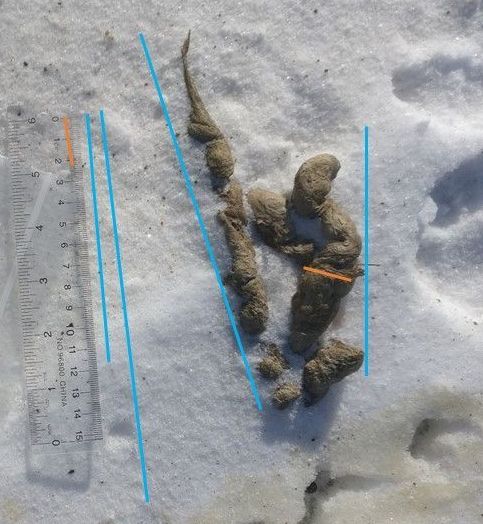
Slide title
Write your caption hereButton
Wolf and coyote scat can be challenging to differentiate. Oftentimes, additional clues are used to assist in identification. Above, wolf scat is shown.
Vocalizations
Both wolves and coyotes are vocal creatures, but their vocalizations and tones differ. Wolves have a wide range of vocal expressions, including howls, growls, and barks. Their howls are deeper and smoother in tone, and serve as a means of long-distance communication, coordinating pack movements and reinforcing social bonds. Coyotes have a more diverse vocal repertoire, consisting of yips, barks, yelps, sharp cackling, and higher-pitched, shorter howls. Their vocalizations often serve territorial purposes or as communication between family members.
Behaviour
Wolves and coyotes exhibit distinct social behaviours that reflect their unique ecological adaptations. Wolves are highly social animals, living in tight-knit family units known as packs. Within the pack, a dominant alpha pair leads the group, often being the only ones to breed. Pack members collaborate in various activities, such as hunting, raising offspring, and defending territory. Their social structure is characterized by complex hierarchies, with individuals occupying specific roles and displaying cooperative behaviours.
In contrast, coyotes display a more flexible social structure. While they can form small family groups, they are also known to live as solitary individuals or in loose associations with other coyotes. They exhibit a more independent lifestyle, relying on their adaptability and resourcefulness to thrive in changing environments.
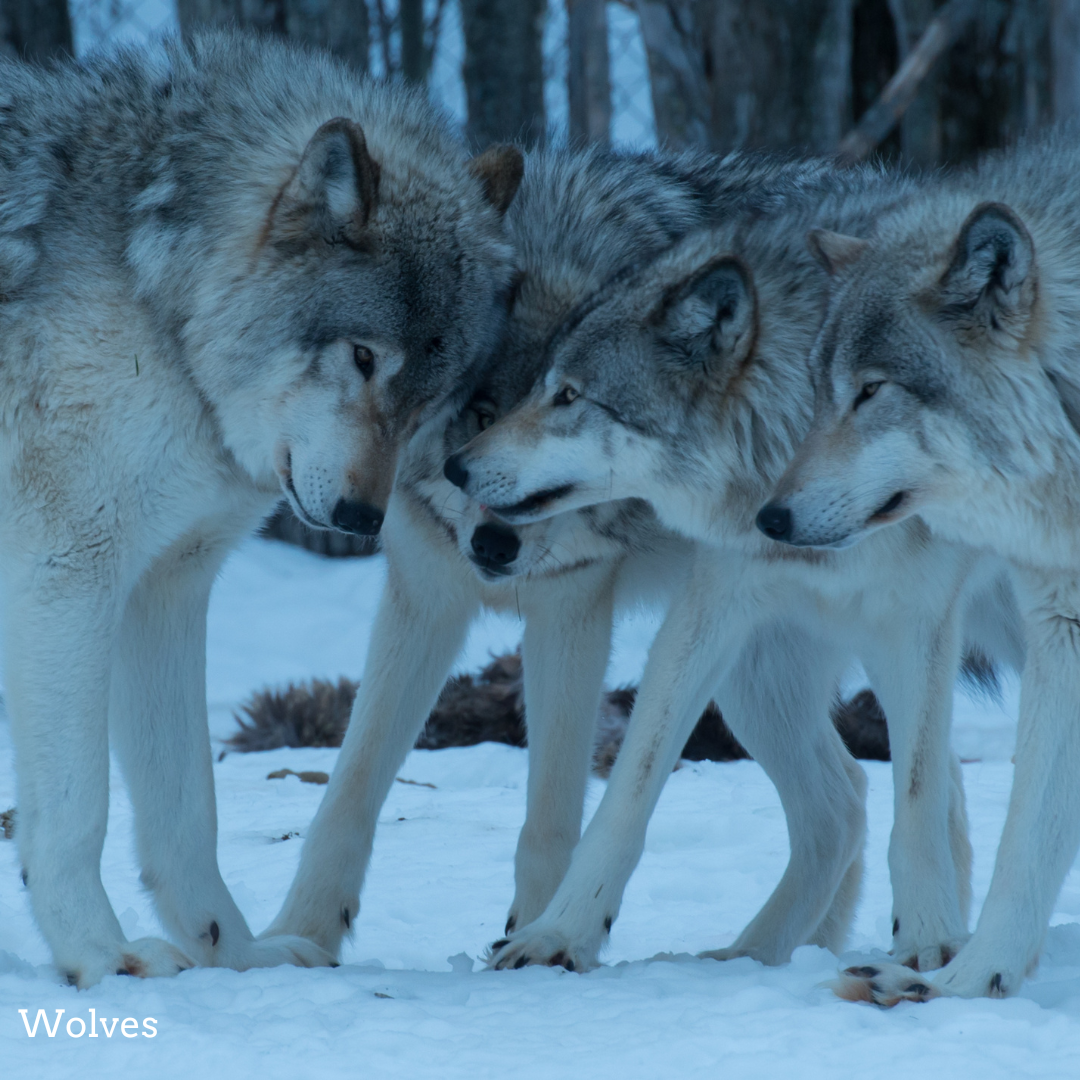
Slide title
Write your caption hereButton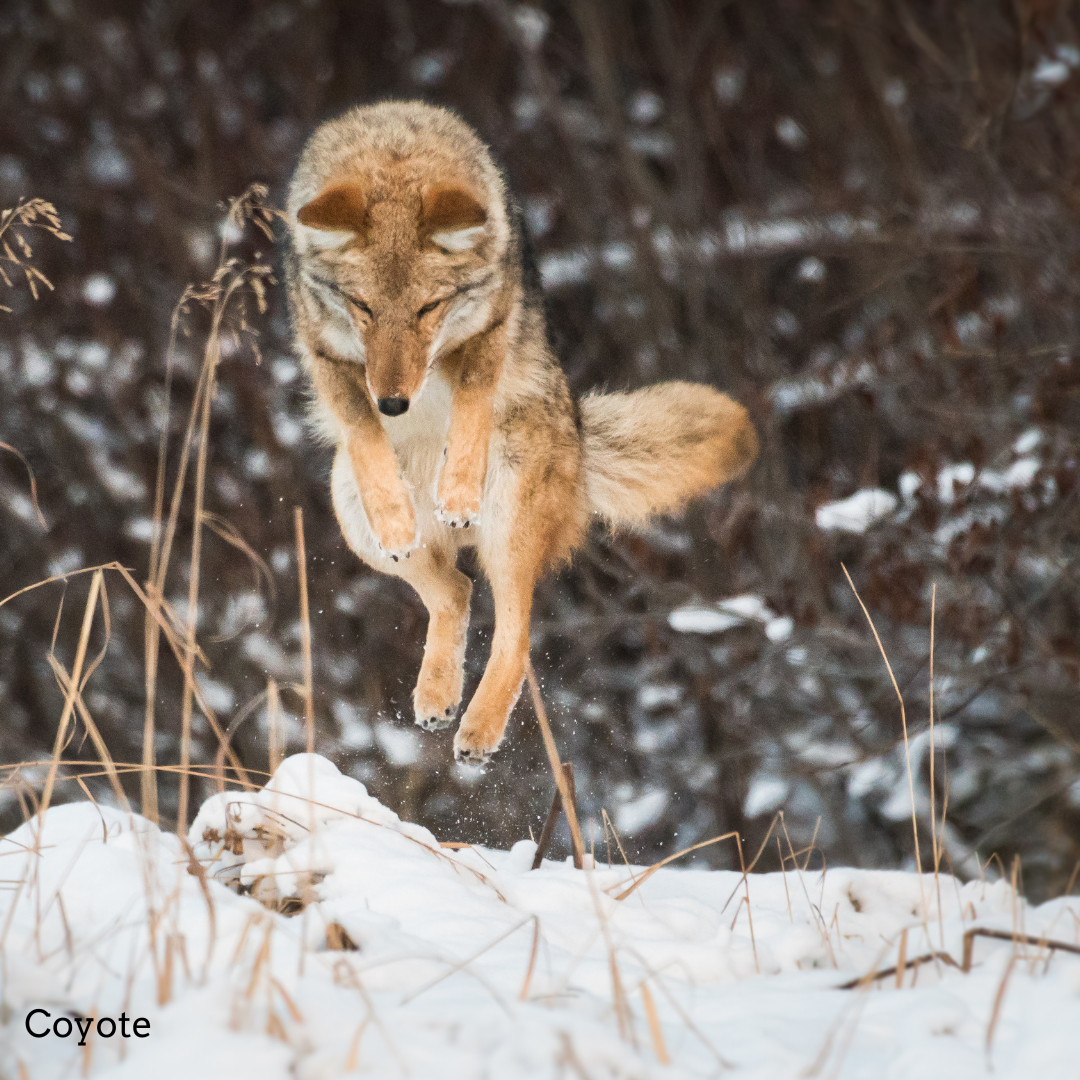
Slide title
Write your caption hereButton
Wolves are generally more social than coyotes.
Nature has uncanny ways, and nowhere is this more evident than in the challenge of distinguishing between the species around us. Through the understanding of distinct nuances, we cultivate a profound connection to the intricacies of the natural world, celebrating the diversity and beauty that resides within it.
This piece was developed as part of our Wildlife Research Project.
Our project is made possible thanks to a passionate group of volunteers and collaborative partners.
You can learn more about our partners here.
The Algoma Highlands Conservancy is a not-for-profit organization created to protect the beauty and ecological integrity of King Mountain and Robertson Cliffs. Our lands offer an extensive network of trails that are open year-round for non-motorized recreational use.
The Algoma Highlands Conservancy is a not-for-profit organization created to protect the beauty and ecological integrity of King Mountain and Robertson Cliffs. Our lands offer an extensive network of trails that are open year-round for non-motorized recreational use.
Algoma Highlands Conservancy
Algoma Highlands Conservancy



